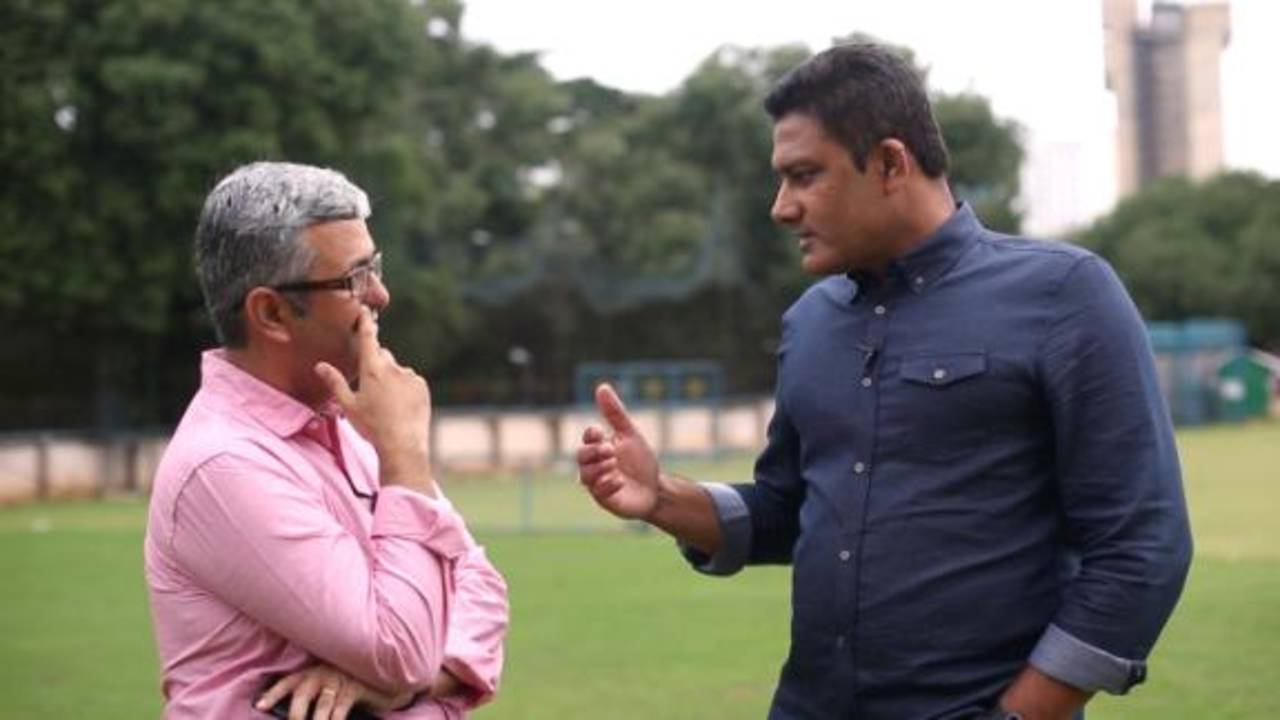India coach
Anil Kumble has given his wholehearted backing for
Cheteshwar Pujara to have an uninterrupted run in the Indian middle order, admitting that it is "not good" that a "sword is always hanging on his head." Pujara lost his spot in the playing XI for the
third Test in St. Lucia during India's recent tour of the West Indies, Kumble's first series in-charge, after making 16 and 46 in his previous two innings. His replacement
Rohit Sharma made 9 and 41 in that match, and both he and Pujara were included for the final Test in Trinidad, where only 22 overs were possible and India didn't get to bat.
"With modern cricket, everybody looks at the strike rate rather than what that particular player brings to that table," Kumble told ESPNcricinfo. "Pujara is a very important cog in our wheel and when he plays at No. 3, he is a very important player. Yes, there are times when he misses out and Rohit comes in. That's when we probably feel we need someone lower down to accelerate. That's why in one of the Tests in West Indies, he missed out.
"The one good thing about this team is that all 17 who were in the squad were all available to play and all of them show that intent. If they are playing, they are fine. When they are left out, yes, they are disappointed, but at the same time, they contribute in whatever way they can. Pujara, yes, the sword is always hanging on his head, which is not good. I certainly believe he is a very important player for us and he will play at No. 3, and for us to be successful, he is important to us in the short term and long term as well."
Pujara and Rohit have had to swap places in recent times as India have preferred to employ a five-bowler strategy in Test cricket, leaving room for one less batsman in the XI. Since taking over from MS Dhoni, Virat Kohli has robustly advocated the tactic. Kumble, too, is on-board with the strategy, though he said it "wasn't set in stone".
"It is not mandatory that you look to play five bowlers. It depends on the opposition, the surface and what the team requires," Kumble said. "If we believe that four bowlers are enough to pick up 20 wickets and you need that additional batsman in the team, then we are open for that. It is not that the five-bowler theory is written in stone and we will approach every game like that. With four bowlers, you can win a Test match. Every team that you play has four bowlers and the fifth bowler you play is the all-rounder who fills in 10-15 overs for the other bowlers to come back again and pick the wickets. The approach will certainly be to win every game that you play."
In line with the tactic to play with five frontline bowlers, India made an intriguing decision in the West Indies, asking R Ashwin to bat at No. 6. The move was instantly rewarded - Ashwin made a hundred in the
first Test at Antigua and following it up with another one in the third in St.Lucia. Kumble explained that the move was made in order to ease the pressure on wicketkeeper Wriddhiman Saha, who was struggling to come to terms with batting in the top six. Saha himself scored a hundred in the series and finished with
205 runs at an average of 51.25
"Obviously, Ashwin has shown in the past what he's capable of as a batsman," Kumble said. "Saha was batting at six and we felt that the pressure that he was getting under wasn't ideal for him. Someone like Ashwin can take that pressure off and then Saha can bat freely, and Ashwin has shown what he's capable of. He's scored two hundreds and made his mark at No. 6 whenever we played five bowlers."
India are scheduled to begin a lengthy home season where they will play 13 Tests, beginning with a three-Test series against New Zealand from September 22.
